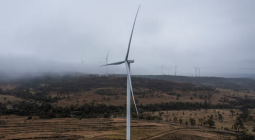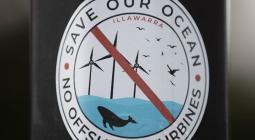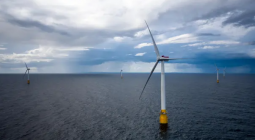Readers reply: Do all wind turbines rotate in the same direction? If so, why?
The long-running series in which readers answer other readers’ questions on subjects ranging from trivial flights of fancy to profound scientific and philosophical concepts
If righty tighty lefty loosey hasn’t got something to do with it, then I’m a Dutch mouse going clip-clippety-clop on the stair. sparklesthewonderhen
Of course they turn clockwise, because otherwise they would unscrew themselves and fall off. EnviroCapitalist
I think it’s a default in rotational design. Clocks do it. So do most dials. Most screws and bolts. Ships’ propellers. Aircraft propellers. All of these would work perfectly well going anticlockwise, but the convention seems to be that clockwise is the way to go. I suspect early designs of wind turbine blades were based on aircraft propellers. 1pillmakesustronger
Wind turbines rotate in a clockwise direction. If they didn’t it would be widdershins – and as most people don’t know what that means, it would only cause confusion. Fallowfield
I think it’s useful (and not in the least bit stuffy) to be more precise and specify “direction” as being about clockwise versus anticlockwise rotation about an axis. It’s also more precise to focus on the sorts of wind turbine we mostly see dotted about the landscape, which means the physical axis is mounted at or close to horizontal such that the blades can be made to face oncoming wind. This optimises for the incident forces that make the blades turn. This means we need not worry about turbines mounted vertically, which can occasionally be seen on smallholdings or, in the form of portable versions, in the hands of the seriously outdoorsy.
The straightforward answer is no, they don’t all turn the same way. However, the vast majority do turn clockwise and one might be forgiven for thinking that’s “just how it works”. It’s almost an accident of history that the wind turbines we see today generally rotate clockwise. (There’s an interesting potted history in a paper from 2020.) Basically, the early fibreglass blades were machined to turn clockwise so they would be different from traditional wind-capture blades used on mills, which turned anticlockwise. Those earlier blades turned anticlockwise because it was more comfortable for right-handed machinists to use laths pointing left.
It’s a weighty paper, but worth the read, because the authors investigate whether or not this clockwise-ness matters. The surprising answer is yes, having all-clockwise rotation in the northern hemisphere (or all anticlockwise in the southern hemisphere) may be slightly less efficient due to directional effects of wind shear. Dorkalicious
When a turbine rotates, “tip vortices” come off the ends of the turbine blades, so you’ll have some sort of triple-helix shape, which rotates based on the rotation direction. Those will dissipate into the larger area of low wind speed downwind of the turbine, known as a “wake”. Wind speed and wind direction can change with height, so that could interact with the rotation in the tip vortices to change where the wake goes, how wide it gets and how fast the wind speed in the wake recovers depending on the rotation direction. On a large enough scale, the Coriolis effect (things tend to get deflected to the right in the northern hemisphere and to the left in the southern hemisphere) also influences the wake, so, again, different turbine rotation directions could behave differently in different hemispheres.
However, the wake is mostly important if you have a large windfarm, where the wake from one turbine is going to reduce the power output of the one behind. And figuring out whether, on average, a clockwise or counterclockwise turbine would lead to better overall farm production would require lots of complex, expensive calculations, which most windfarm builders wouldn’t want to pay for. I can’t think of any way that somebody could make a turbine where you could automatically change itcounters rotation direction; you would have to buy one that way to begin with.
So if the potential benefit of a counterclockwise turbine is small, very location-specific and requires a lot of computer time to determine – and if we have good manufacturing infrastructure for clockwise turbines already – why invest in the infrastructure to make counterclockwise turbines? anglebiscuit
Cover photo: David Creedon/The Guardian





